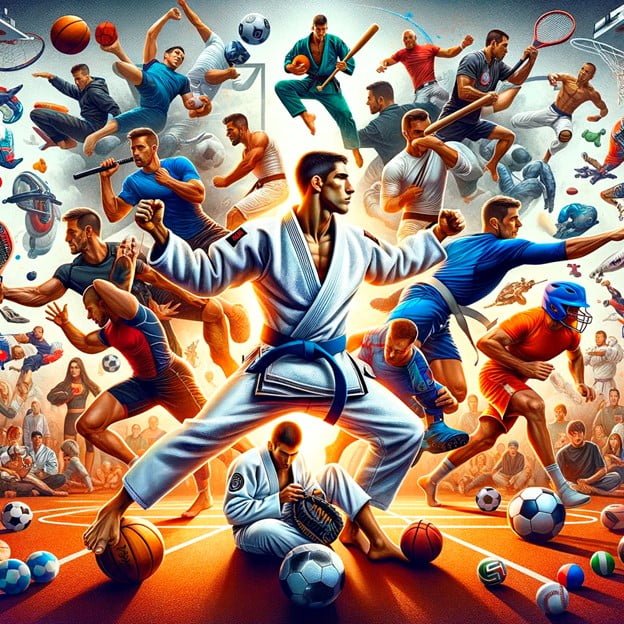
Introduction to BJJ
Have you ever watched a spider catch a fly? It’s all about strategy, patience, and using the right technique at the right moment. Now, imagine you’re the spider, but instead of catching flies, you’re mastering the art of grappling in Brazilian Jiu-Jitsu (BJJ). BJJ isn’t just about fighting; it’s a game of human chess where every move counts. In this blog, we’ll explore how learning BJJ can turn you into a grappling wizard, not just on the BJJ mats but in other sports as well. 🕷️🥋
The Art of Grappling in BJJ
Grappling in BJJ is like trying to untangle headphones; it requires patience, technique, and sometimes, a bit of magic. BJJ teaches you to control an opponent by taking the fight to the ground, using leverage, locks, and holds. It’s not about who’s bigger or stronger; it’s about who’s smarter and more skilled. 🧠💪
Benefits of BJJ for Other Sports
3.1. Improved Balance and Coordination
Playing sports is like dancing at a concert. You need rhythm, balance, and coordination to not bump into others (or fall flat on your face). BJJ is the perfect dance teacher, improving your balance and coordination, which is essential in sports like soccer, basketball, and even surfing! 🏄♂️🏀⚽
3.2. Enhanced Strength and Flexibility
Imagine being as flexible as a rubber band and as strong as a gorilla. BJJ workouts and techniques stretch and strengthen your muscles, making you less prone to injuries and more powerful in your movements, beneficial for sports like gymnastics, swimming, and football. 🦍🏊♀️🤸♂️
3.3. Strategic Thinking and Adaptability
In BJJ, you learn to think three steps ahead, like a grandmaster in chess. This strategic thinking and adaptability translate well into team sports, where making quick decisions and adjusting strategies on the fly can mean the difference between victory and defeat. 🏆♟️
Stories from the Mat: Real-Life Successes
Let’s share tales of athletes who grappled their way to greatness. From a football player who dodged tackles better after BJJ training to a wrestler who found new ways to pin opponents, these stories inspire and showcase the universal benefits of BJJ. 🌟
How to Get Started with BJJ
Starting BJJ is easier than you might think! Look for local gyms, check out introductory classes, and don’t worry about being a newbie. Everyone starts somewhere, and the BJJ community is renowned for its welcoming spirit and camaraderie. 🤗🥋
Conclusion
Incorporating BJJ into your training regime can significantly enhance your grappling skills, making you a more versatile and formidable athlete in any sport. It’s not just about the physical benefits; it’s about the mental game, strategy, and a whole new way of thinking. 🧩
Call to Action
Ready to roll? Grab your gi, find a gym, and dive into the world of BJJ. You’ll not only improve your grappling skills but also discover a supportive community and a sport that’s both challenging and rewarding. Let’s get grappling! 🚀
FAQs
1. Do I need to be in good shape to start BJJ? No, BJJ is for everyone! You’ll get in shape as you train.
2. Can BJJ really improve my performance in other sports? Absolutely! BJJ enhances physical and mental attributes that are beneficial across all sports.
3. How often should I train BJJ to see improvements? Training 2-3 times a week can lead to noticeable improvements in your skills and fitness.
4. Is BJJ safe for children and teenagers? Yes, BJJ is a great way for young people to learn discipline, self-defense, and fitness in a safe environment.
5. How long does it take to get good at BJJ? Progress in BJJ is a journey; everyone’s path is different, but with consistent training, you’ll continue to improve and achieve your goals.
This blog post is designed to be informative, engaging, and accessible to readers of all ages, encouraging them to explore the benefits of BJJ not only for their grappling skills but for their overall athletic performance and well-being. Remember, the goal is to make the process enjoyable and the information valuable and motivating
